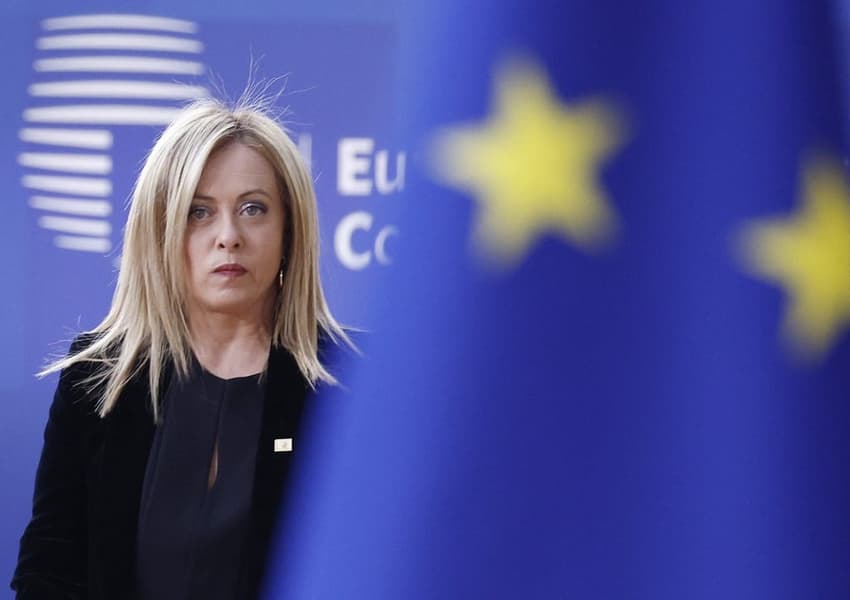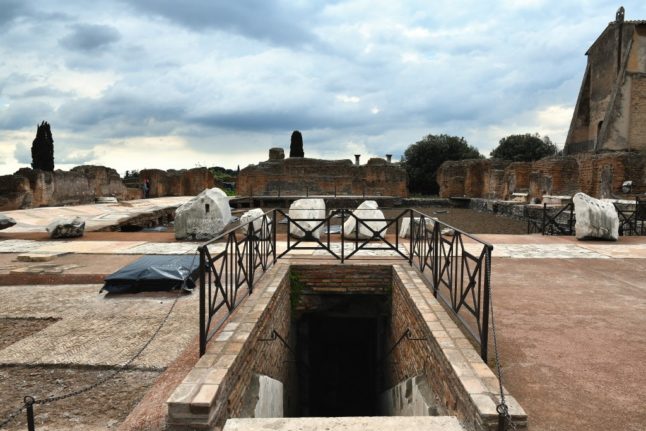'It would be a disaster': Is Italy at risk of losing EU recovery funds?

There are rising concerns that Italy will lose billions of euros offered in EU post-pandemic recovery funds amid delays, changes to the spending plan, and questions about why Italy is using the money to build two sports stadiums.
When Mario Draghi left Italy's government last year, there were concerns about the fate of the EU recovery funds he had negotiated for his country.
Now, fears are rising that billions of euros are at risk of being lost as the new government aims to negotiate changes to spending plans drawn up more than two years ago.
READ ALSO: What’s changing under Italy’s post-pandemic recovery plan?
Out of all member states, Italy is taking the biggest chunk of European Union aid for economic recovery after the coronavirus pandemic, with 191.5 billion euros in grants and loans to be paid in instalments until 2026.
The first two instalments progressed smoothly, but the third payment from the EU is now frozen as Brussels asks for clarification about some aspects of Italy’s plans - particularly to spend the cash on building two sports complexes.
"I'm not worried about delays," Prime Minister Giorgia Meloni, who took over in October, insisted on Monday, adding that any issues with the plan "are not the result of choices of this government".
OPINION: Italy has a big chance to improve digital infrastructure – but will it take it?
Draghi, a former head of the European Central Bank, quit last summer after his coalition government fell apart and he was succeeded as premier by Meloni, the untested leader of the far-right Brothers of Italy party.
The EU has frozen the third scheduled payment to Italy, worth 19 billion euros, until at least the end of April pending clarification of some of the 55 objectives due during the second half of 2022.
Stadiums and beach concessions
Brussels has issues with some of Italy's plans for the money, including the renovation of Fiorentina’s 1930s football stadium in a wealthy neighbourhood of Florence and the construction of a new sports stadium in Venice.
The EU funds were supposed to be focused on projects that boost digitalisation, the transition to a more environmentally friendly economy, and infrastructure, notably the rail sector, as well as revamping neglected urban areas, and European officials say the sports stadium projects do not fit the bill.
Another point of contention is Meloni's decision to delay by at least a year plans to open up Italy's many beach concessions to public tender, a decision that drew a rebuke from the government's own independent judicial body.
READ ALSO: Why are so many of Italy's beaches privatised?

Plans for EU-funded redevelopment measures include work at many of Rome's historical sites. Photo by Alberto PIZZOLI / AFP
Spending is also behind schedule, with Italy originally hoping to spend more than 40 billion euros by the end of 2022.
But just 12 billion has been committed, six percent of the total EU fund, according to Italy’s Court of Auditors.
"There are clearly delays as far as spending and construction are concerned, not so much in achieving objectives," Lorenzo Codogno, a former chief economist at the Italian Treasury, told AFP.
"There is zero chance of getting agreement from Brussels on extending the deadline beyond 2026. Italy has to deliver all milestones and targets by that time," he added.
The credibility of the entire EU scheme, worth 800 billion euros, is now at stake.
READ ALSO: How one dying Italian village plans to spend €20m in EU recovery funds
EU Economy Commissioner Paolo Gentiloni, himself a former Italian prime minister, warned in March that "we Italians cannot be responsible for the failure of the first eurobonds at the European level, it would really be a disaster from a European point of view".
“We need to roll up our sleeves in Brussels and Rome and make this stuff work,” Gentiloni said.
If the project fails, Italy "would have wasted a unique opportunity" and in the future, "the EU will become more austere" in applying stricter budgetary rules, said another former Italian premier, economist Mario Monti.
Italy's EU Affairs Minister Raffaele Fitto has said the government is in talks with Brussels to replace some projects from its original plan, which it now says it cannot complete by the 2026 deadline.
These would be replaced with less ambitious projects that can be completed on time, while the original ones could be financed using separate European Union funds that can be spent until 2029, he said.
Comments
See Also
When Mario Draghi left Italy's government last year, there were concerns about the fate of the EU recovery funds he had negotiated for his country.
Now, fears are rising that billions of euros are at risk of being lost as the new government aims to negotiate changes to spending plans drawn up more than two years ago.
READ ALSO: What’s changing under Italy’s post-pandemic recovery plan?
Out of all member states, Italy is taking the biggest chunk of European Union aid for economic recovery after the coronavirus pandemic, with 191.5 billion euros in grants and loans to be paid in instalments until 2026.
The first two instalments progressed smoothly, but the third payment from the EU is now frozen as Brussels asks for clarification about some aspects of Italy’s plans - particularly to spend the cash on building two sports complexes.
"I'm not worried about delays," Prime Minister Giorgia Meloni, who took over in October, insisted on Monday, adding that any issues with the plan "are not the result of choices of this government".
OPINION: Italy has a big chance to improve digital infrastructure – but will it take it?
Draghi, a former head of the European Central Bank, quit last summer after his coalition government fell apart and he was succeeded as premier by Meloni, the untested leader of the far-right Brothers of Italy party.
The EU has frozen the third scheduled payment to Italy, worth 19 billion euros, until at least the end of April pending clarification of some of the 55 objectives due during the second half of 2022.
Stadiums and beach concessions
Brussels has issues with some of Italy's plans for the money, including the renovation of Fiorentina’s 1930s football stadium in a wealthy neighbourhood of Florence and the construction of a new sports stadium in Venice.
The EU funds were supposed to be focused on projects that boost digitalisation, the transition to a more environmentally friendly economy, and infrastructure, notably the rail sector, as well as revamping neglected urban areas, and European officials say the sports stadium projects do not fit the bill.
Another point of contention is Meloni's decision to delay by at least a year plans to open up Italy's many beach concessions to public tender, a decision that drew a rebuke from the government's own independent judicial body.
READ ALSO: Why are so many of Italy's beaches privatised?

Spending is also behind schedule, with Italy originally hoping to spend more than 40 billion euros by the end of 2022.
But just 12 billion has been committed, six percent of the total EU fund, according to Italy’s Court of Auditors.
"There are clearly delays as far as spending and construction are concerned, not so much in achieving objectives," Lorenzo Codogno, a former chief economist at the Italian Treasury, told AFP.
"There is zero chance of getting agreement from Brussels on extending the deadline beyond 2026. Italy has to deliver all milestones and targets by that time," he added.
The credibility of the entire EU scheme, worth 800 billion euros, is now at stake.
READ ALSO: How one dying Italian village plans to spend €20m in EU recovery funds
EU Economy Commissioner Paolo Gentiloni, himself a former Italian prime minister, warned in March that "we Italians cannot be responsible for the failure of the first eurobonds at the European level, it would really be a disaster from a European point of view".
“We need to roll up our sleeves in Brussels and Rome and make this stuff work,” Gentiloni said.
If the project fails, Italy "would have wasted a unique opportunity" and in the future, "the EU will become more austere" in applying stricter budgetary rules, said another former Italian premier, economist Mario Monti.
Italy's EU Affairs Minister Raffaele Fitto has said the government is in talks with Brussels to replace some projects from its original plan, which it now says it cannot complete by the 2026 deadline.
These would be replaced with less ambitious projects that can be completed on time, while the original ones could be financed using separate European Union funds that can be spent until 2029, he said.
Join the conversation in our comments section below. Share your own views and experience and if you have a question or suggestion for our journalists then email us at [email protected].
Please keep comments civil, constructive and on topic – and make sure to read our terms of use before getting involved.
Please log in here to leave a comment.